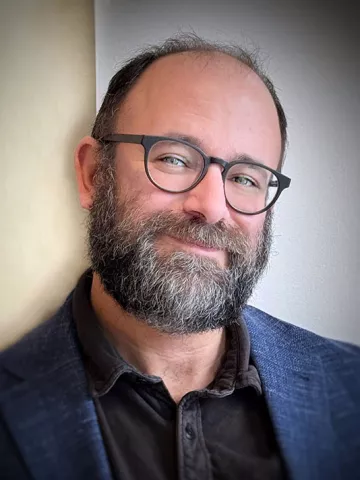
National Board of Directors (2004-2010), Board Executive Committee (2005-06, 2008-10), Sierra Club Vice President for Trainings (2003-2004), Sierra Student Coalition National Director (1999-2000), Sierra Student Coalition National Trainings Director (1998-1999) Co-lead, Sierra Club National Mobilization Team (2017-2021), Editorial Board, Sierra Club Organizing Manual (2016)
I have been a member of the Sierra Club for 29 years. I joined on my 16th birthday, and spent much of my young adult life in the national leadership of the Club’s student-run arm, the Sierra Student Coalition (SSC). To this day, the SSC has an award named in my honor. I was first elected to the Sierra Club’s National Board in 2004, while I was in my first year of graduate school. For about fifteen years, the Club was half my life.
After leaving the Board, I started my career as a professor of political communication. I teach and conduct research on how social movement organizations build power and win victories in the digital age. My research has won national accolades. I frequently advise political nonprofits on how to create leverage in a changing communications environment. In the classroom, I impart to my students many of the same lessons I was taught in my Sierra Club days.
I am looking to be re-elected to the Board because I have grown concerned about the state of the Club. Recently, it seems as though every time the Sierra Club is in the news, it is because of fresh reporting on internal strife and division. It appears, from the outside, like we have forgotten some of the fundamental principles that have made the Club such a vital force for progressive change.
2023 was the hottest year ever. We are living through the consequences of past climate inaction. I have two young children, and I worry about the world they will grow up in. There has never been a more important time for the Sierra Club to be good at the things we do best: building grassroots power, organizing strategic campaigns, and pressuring the powers-that-be in defense of climate justice. We need to be a force that pushes the political system to speed up. For the good of the planet, the Sierra Club’s best days have to be ahead of it.
I think the Board could use another steady hand right now – someone who knows the organization and its history, but also has some critical distance. We’ve been through rough patches before. I believe I can help guide us through this one.
Endorsements
Former Sierra Club President Lisa Renstrom, current Sierra Club Vice President for Chapters, Groups, and Volunteers Patrick Murphy, Former Sierra Club Organizing Director Bob Bingaman, Utah Chapter